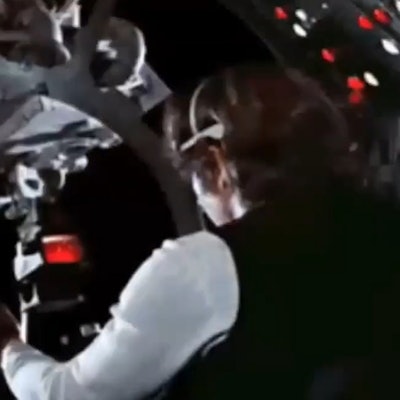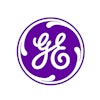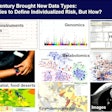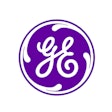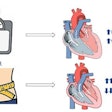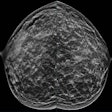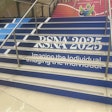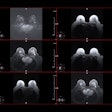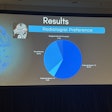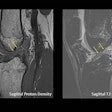
The world may have begun to return to normalcy after the peak of the COVID-19 pandemic, but radiology research continues to analyze the disease's impact and how it presents on medical imaging.
In fact, COVID stories had three spots in the top five of AuntMinnie.com's 2022 10 most viewed stories for the year. One of these reported on the Society of Nuclear Medicine and Molecular Imaging's (SNMMI) warning about COVID-19's omicron variant and its impact on PET/CT scans, while the two others dealt with congressional failures regarding how best to deal with the pandemic and how MRI detects myocarditis in younger people who received the COVID vaccination.
But the number one story this year highlighted the lasting legacy of Dr. Raymond Damadian, who passed away in August. Celebrated as the "father of MRI," Damadian and colleagues produced the first successful human MRI scan in 1977. It was this invention that led Damadian to later be awarded the National Medal of Technology and inducted into the National Inventors Hall of Fame.
Other matters of interest among AuntMinnie readers this year included how quick image interpretation may be considered medical negligence, the contrast media shortage that kept radiology departments and hospital administrators up at night, and ... Star Wars. That's right: One of our top 10 articles in 2022 described an approach to neck pain in the reading room based on a famous character from the movie series.
Keep reading to find out what interested AuntMinnie.com readers most in 2022, and may the Force be with you.
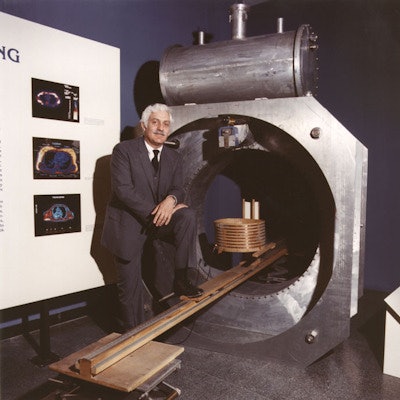
- Dr. Raymond Damadian, father of MRI, dies at 86
Our number one story posted in August looked at the legacy of Dr. Raymond Damadian, who along with colleagues, produced the first human MRI scan. Damadian passed away that month at the age of 86. Throughout his life, he was celebrated for medical imaging innovation -- and was inducted into the National Inventors Hall of Fame -- but was also a controversial figure for, among other reasons, his claim that he should have received the Nobel prize in medicine for his work in MRI.
- Is it medical negligence to interpret an image quickly?
Our second-most read story this year looked at the medicolegal question of whether fast interpretation of images could lead to negligence lawsuits. Researchers from SUNY Downstate Medical Center in Brooklyn dove into this and made connections to increased radiologist workloads, as well as the pros and cons of regulation in this area.
- SNMMI warns of omicron's impact on PET/CT scans
In the third story in our list, we highlighted research that assessed "unusual" imaging patterns on PET/CT scans caused by the COVID-19 omicron variant. The Society of Nuclear Medicine and Molecular Imaging (SNMMI) COVID-19 Task Force issued warnings and guidelines about these patterns, which included symmetric FDG uptake throughout the nasopharynx, oropharynx, and tonsils with or without associated FDG-avid cervical lymphadenopathy.
- U.S. report on COVID response says Atlas strategy caused deaths

The U.S. House of Representatives subcommittee in June issued a report on the Trump administration's response to the COVID-19 pandemic.
The report blamed neuroradiologist Dr. Scott Atlas for a strategy it said led to thousands of "preventable" deaths from the SARS-CoV-2 virus.
- MRI spots myocarditis in young people vaccinated for COVID-19
Rounding out the top five in this year's list is a study that assessed MRI's ability to detect myocarditis in young people who received the COVID-19 vaccination. Researchers from the U.S. Centers for Disease Control and Prevention (CDC) found that more than 70% of people younger than 30 who developed myocarditis after receiving an mRNA COVID-19 vaccine also had abnormal cardiac MRI results.
- Hospital group warns of contrast media shortage
In May, the Greater New York Hospital Association (GNYHA) warned member hospitals about a temporary shortage of GE Healthcare's Omnipaque iodinated contrast media. The association issued guidelines of how hospitals could navigate the shortage, which was caused by the temporary shutdown of a GE facility in Shanghai, China, due to the COVID-19 pandemic.
- Radiology salaries edge higher in latest SalaryScan numbers
Radiologists and radiologic technologists reported salary increases in AuntMinnie's annual survey of benefits and compensation. In fact, the average base annual salary for U.S.-based technologists topped $80,000 for the first time in the history of SalaryScan. The survey also looked at salaries based on subspecialization and geographic location, with radiologists specializing in CT earning the most and those specializing in nuclear medicine/PET earning the least.
- GE reveals brand name for impending healthcare spinoff
GE Healthcare in July announced its spinoff brand name will remain the same ... almost. The spinoff will be called GE HealthCare with a capital "C," will feature a new purple color in its logo, and will be listed on Nasdaq under the symbol GEHC.
- SIIM: Neck pain in the radiology reading room? Consider the 'Han Solo' approach

Our ninth most-read story this year was about a team of researchers from Saint Vincent Hospital in Massachusetts that explored the importance of ergonomics in the radiology reading room, focusing on neck pain. The group suggested an approach where, rather than having radiologists constantly turn their neck, adding to strain, they should use a swiveling chair-deck -- much like how the Star Wars character Han Solo used a swivel chair when firing from a cockpit in his ship, the Millennium Falcon.
- Dark-field CT moves closer to human medical applications
Rounding out our top-10 list this year was research coming out of Germany highlighting a scanner that incorporates dark-field CT. The researchers found that the device was effective in capturing dark-field data, such as small-angle scattering, and suggested that this "provides additional valuable diagnostic information on otherwise unresolved tissue microstructure," and that it could have immediate impact on lung imaging if approved.


